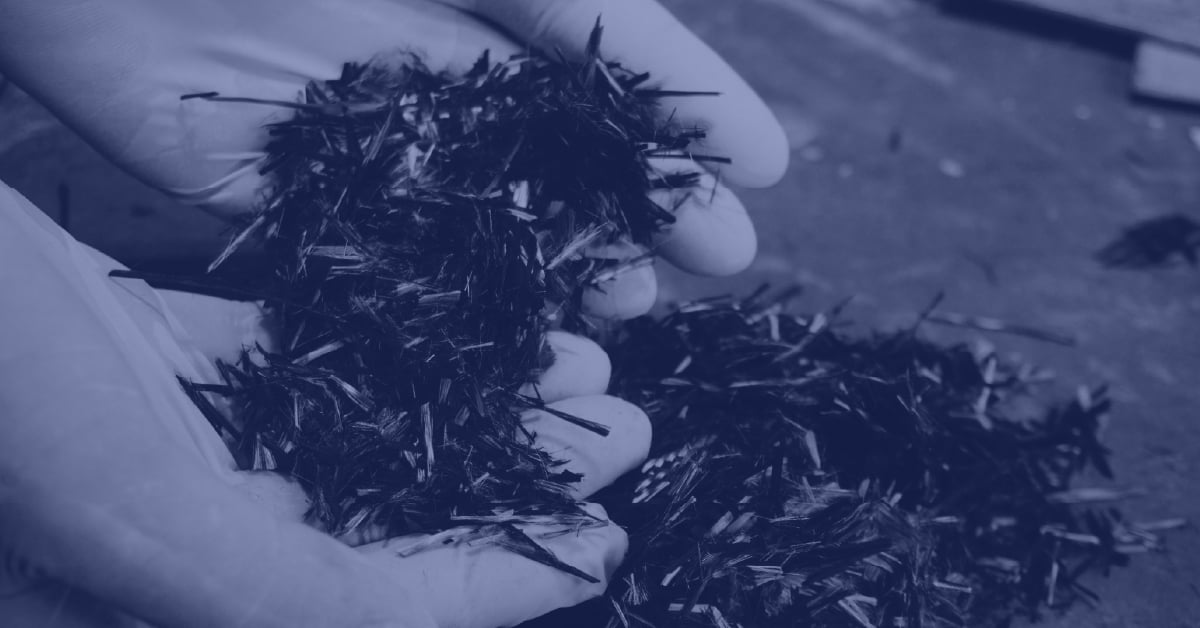The Purpose of Different Grades of Carbon Graphite
Carbon graphite is often the best material for a variety of demanding applications, including high temperatures, low temperatures, corrosive environments, aerospace design, marine environments, and more.
However, since these applications tend to be extremely demanding, carbon graphite often needs to be modified to add or increase characteristics such as strength, thermal conductivity, and imperviousness.
A carbon graphite grade that works perfectly for one application may result in carbon graphite oxidization in another. As a result, having a variety of carbon graphite grades to choose from is essential for a manufacturer.
How Are Different Carbon Graphite Grades Created?
Combining different carbon formulas with raw materials, baking temperatures, additives, impregnations, and coatings results in an abundance of carbon graphite grades. Let’s take a look at the role each of these plays in creating different carbon graphite grades:
Different Carbon Formulas
Since carbon graphite, at its most basic, is a combination of carbon and graphite, the formula can be tweaked to meet the needs of the application. Carbon is necessary for hardness, strength, and wear resistance; graphite’s main benefit is its capacity for reducing friction.
Different formulas adjust the strength and lubricity of the resulting material, especially when combined with raw materials, additives, baking temperatures, impregnations, and coatings.
 Raw Materials
Raw Materials
Raw materials are the base for creating carbon. The process for creating carbon is often compared to baking. The characteristics of the carbon grade are dependent on the specific raw materials used as well as the concentration of one raw material compared to the others.
 Additives
Additives
Additives are inorganic materials that are included in a carbon graphite formula at the time of mixing, though this can also be a general term for treatments. The use of additives is highly dependent on the customer’s application needs. If additives are necessary, they are used to improve or alter the carbon graphite’s physical properties.
 Baking Temperatures
Baking Temperatures
Baking temperatures can have a dramatic effect on the carbon graphite grade. Increasing the baking temperature, for example, will transition the carbon graphite component to strictly graphite. On an elemental level, the grade is the same, but the physical properties change significantly. Most notably, temperature resistance and lubricity will be improved.
 Impregnation
Impregnation
After carbon graphite is manufactured, it is porous, which often is not an issue. However, some applications would benefit from this porosity being closed off or reduced. Other applications may need to enhanced characteristics from their carbon graphite. In both cases, impregnation is used to achieve the desired results.
 Coatings
Coatings
Carbon graphite coatings are great for wear reduction, leak prevention, and even increased temperature resistance. Some popular examples of carbon graphite coatings are Teflon™, pyrolytic graphite, pyrolytic carbon, silicon carbide, and diamond-like or diamond coatings.
Impregnated Carbon Graphite
When an application requires specific characteristics or reduced or eliminated porosity, carbon graphite impregnation is necessary. A variety of materials can be used for carbon graphite impregnation, all of which add their own characteristics to the grade.
Various Resins
Impregnating carbon graphite with resins is typically required when leak prevention or enhanced chemical resistance is necessary. However, resins are typically reserved for lower temperature applications.
Inorganic Salts
In oxidizing atmospheres, such as those with very high temperatures, rusting from atmospheric corrosion is extremely common. Inorganic salts can be used to increase a grade’s temperature resistance, thus eliminating oxidization issues.
Antimony
Impregnating carbon graphite with antimony reduces the grade’s porosity, leading to a reduction in blister formation in hot oil and light hydrocarbon applications. Some end users have reported that antimony improves the wear and friction characteristics of carbon graphite. However, we have not seen this from our own laboratory testing.
Babbitt
Babbitt metals are alloys that consist mostly of lead or tin, though they may also contain copper, antimony, and arsenic. Babbitt is known for its non-galling characteristic and a low melting point, making it quite cost-effective. Some end users have reported that babbitt improves the wear and friction characteristics of carbon graphite. However, we have not seen this from our own laboratory testing.
Copper
Carbon graphite grades impregnated with copper are particularly useful for dynamic electrical transmission applications. Copper is also often used to replace lead as a component material, which has been necessary in order to meet environmental regulations.
Silver
Molten silver is used to impregnate carbon graphite because it enhances a variety of properties:
- High thermal conductivity
- Low contact resistance
- Low electrical resistivity (or high electrical conductivity)
- Rapid static charge dissipation
- Oxidation resistance
- Chemical resistance
- Tribological performance
Switching Carbon Graphite Grades Is Sometimes Necessary
Believe it or not, you may occasionally encounter a situation where a carbon graphite grade no longer performs as desired. When this occurs, you must work with your manufacturer to find a new carbon graphite grade that can fulfill the requirements of your application. Alternatively, you may need to switch manufacturers to find a suitable solution.
St. Marys Carbon has assisted customers with this process on several occasions:
Unexpected Arcing Issues
A leading company in the design and manufacture of lighting and safety components had an issue with one of their existing parts. They were having arcing issues with a brush that they had not seen previously, so they came to St. Marys Carbon for help with the issue. Due to our extensive knowledge of brushes, we were able to determine that this was likely due to the spring and/or insulation on the brush.
We provided carbon graphite samples with the alternative insulation and spring that we recommended to see how they performed in their application. The customer tested the parts, and the arcing issue was resolved. This is now the part they order every time.
Wear and Tear Issues
An OEM turbine manufacturer came to St. Marys Carbon to see if we could offer a premium grade of carbon graphite for their turbine rings. The existing material that they were using was working, but they were seeing visible signs of wear, and the rings weren’t lasting as long as they’d like.
We developed a premium grade for them that was able to offer increased hardness and also a higher temperature limit, which limited the wear on the part. They tested the new turbine rings, and our solution solved the issue for them; they were able to keep the turbines running longer with minimal signs of wear. As a result, they switched the majority of their parts over to this new grade.
Suboptimal Lubrication
An automotive pump manufacturer was using bronze bearings in their application. However, the pump was dry running and bronze doesn’t have the lubrication and chemical resistance that they needed. Without the lubrication, it can cause the bearings to fail more easily and, in worst case scenarios, it could cause the engine to overheat and fail. Carbon naturally provides lubrication which makes it ideal for dry running environments. We were able to provide them with a carbon graphite bearing that they put into testing. The new bearing significantly outperformed the old bearing in testing.
Finding the Right Carbon Graphite Grade
If your application has strict specifications and requirements, you can’t just accept any ordinary carbon graphite grade. Whether you have an existing part you need reverse-engineered, or you have a new part you need machined for a project, it’s vital to have a carbon graphite grade that can perform as required. Working with the right manufacturer can mean the difference between success and failure with a project.




